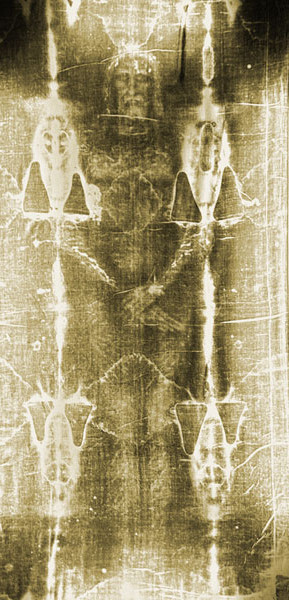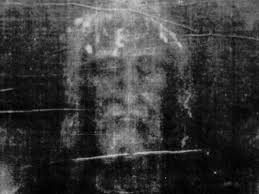
The Shroud
Monday, June 29, 2015
*Rogelio Zelada

Photo: Archdiocese of Turin

Photo: Archdiocese of Turin
The Cathedral of St. John the Baptist has become a huge exhibit hall where the faithful from all over the world can come to closely contemplate and venerate its great treasure: the Holy Shroud.
Millions of pilgrims stand in silence before the great aluminum and glass reliquary that preserves the most revered linen of Christianity in an atmosphere of argon gas, always kept at a constant temperature.
A crowd of efficient volunteers moves the thousands of pilgrims who come to Turin for this extraordinary event that is only repeated every 10 years: the exposition of the Shroud, the sacred linen that tradition identifies as the burial cloth that wrapped the body of Christ in the new tomb of Joseph of Arimathea.
To view it was an unexpected gift: A priest friend with whom I made the pilgrimage had to sit down to relieve an annoying pain in the knee, probably caused by all that we had walked so far. One of the volunteers noticed it and brought him a wheelchair, so we were put on a fast track and within minutes arrived in front of the Shroud, leaving behind several thousands who devoutly waited for their moment to pray before such an important relic.
St. John tells in his Gospel how Joseph of Arimathea prepared the body of Jesus with great care. He used a new burial cloth and an abundance of balms: a generous and copious amounts of myrrh and aloes, which should ensure the preservation of the Master’s body for a long time. Simon Peter saw the linen lying on the floor in the empty tomb at dawn on the day of the resurrection.
Historical references regarding the vicissitudes involved in preserving the Shroud are difficult to pinpoint during the early Christian era. The first reference places it in Edessa, Turkey, where it was known in the sixth century. In the 10th century, the shroud was exhibited every Friday in the church of St. Mary of Blachernae, in Constantinople, according to the account of Robert de Clari, chronicler of the Crusades.
In the 13th century, a nephew of the emperor of Byzantium writes to the Pope to protest the pillaging of many valuable relics, among them the Holy Shroud, which was stolen by the Crusaders during the assault and siege of Constantinople. The Shroud was handed afterward to Geoffrey de Charnay, until the last member of his family bequeathed it to the Dukes of Savoy in 1453.
In 1532, a fire nearly destroyed the Shroud, but the Poor Clares of Chambéry carefully repaired it in 1534. These cloistered nuns added patches that replaced the burned parts, but the printed image of the body in the Shroud suffered no damage. St. Charles Borromeo wanted to venerate the Holy Shroud, so the Duke of Savoy moved it to Turin in 1578, and it has since remained in this beautiful city of Italy's Piedmont region. Umberto II of Savoy, the last king of Italy, bequeathed the Shroud to the Holy See in his will of March 1983, and St. John Paul II entrusted it to the care of the Archbishop of Turin.
Most of the Turin Cathedral remains dark, like a large frame enclosing the hall where the Shroud is displayed, a darkness that helps to highlight every detail of what is imprinted on the funeral linen. Before going to contemplate the cloth, an audiovisual presentation helps visitors understand the history of the Shroud, its measurements and all the details that can be appreciated much better when the entire image appears reversed in a photographic negative. The linen retains traces of old burns and the stains of the water used to extinguish the fire in 1532. The cloth, a soft ivory color, shows a double image in the center, front and back, of a human body, 1.70 meters tall.
It is a striking portrait of a man who died by crucifixion. Clearly seen are blood stains where the nails pierced his hands and feet; the traces of a terrible flogging, marking over 120 lashes; strong blows to the face; the top of the head pierced by the torment of a cap of sharp objects. A large wound on the right side is clearly noticeable, from which abundant blood flowed; and there are abrasions on his right shoulder caused by the weight of a beam that he had to carry to the place of execution.
To contemplate the Holy Shroud of Turin is to read imprinted on the cloth the whole story of the Passion as it appears in the Gospels. The Holy Shroud tells exactly what the tradition collects in the New Testament about the death and burial of Jesus Christ. But its sacred value is not tied to the certainty that it is the same cloth that covered the body of Jesus of Nazareth, but to the enormous evocative power of the image that is there, in relation to the great mystery of the Passion of Christ.
St. John Paul II exclaimed before the Shroud: "Echoing the word of God and centuries of Christian consciousness, the Shroud whispers: believe in God’s love, the greatest treasure given to humanity."


Comments from readers